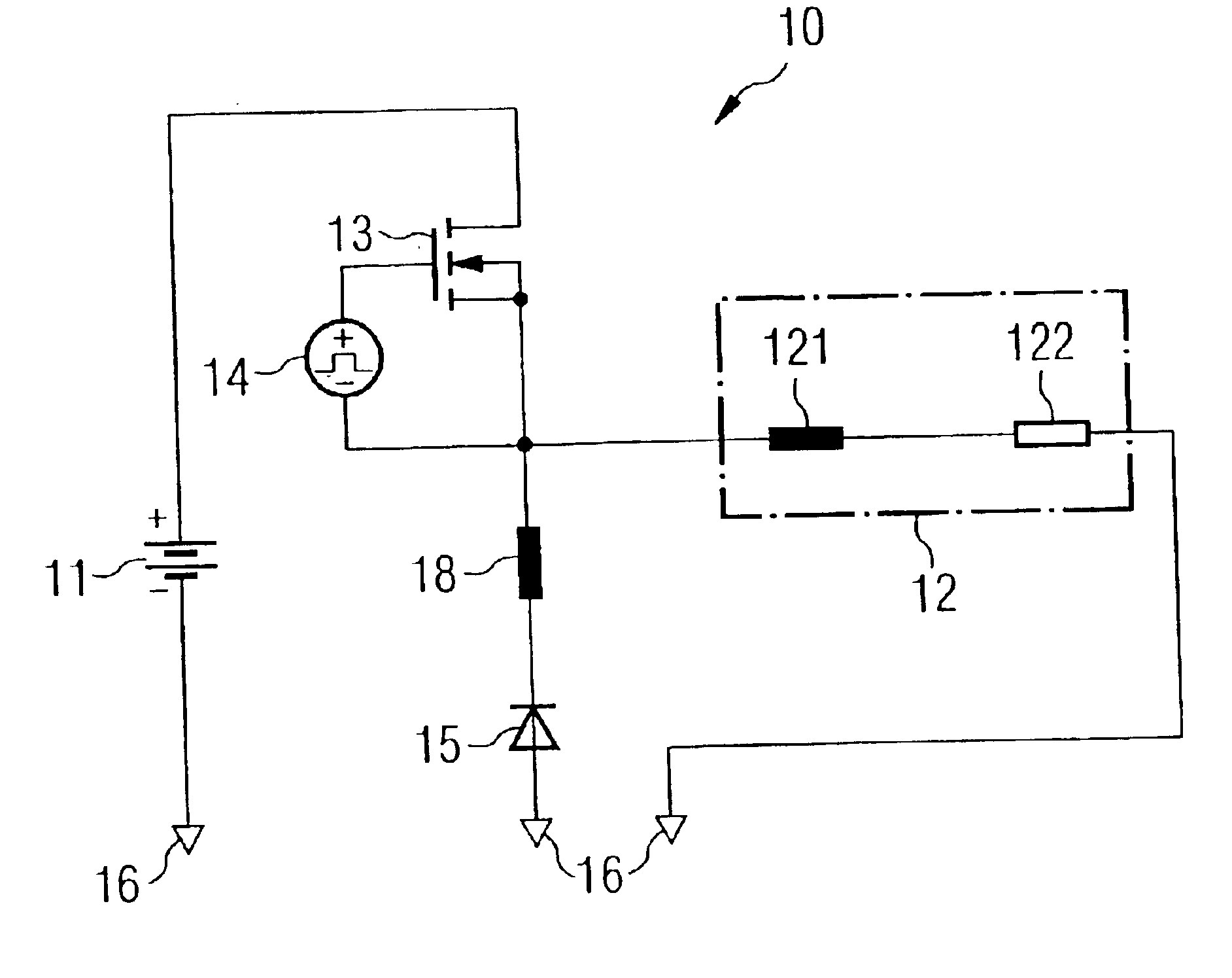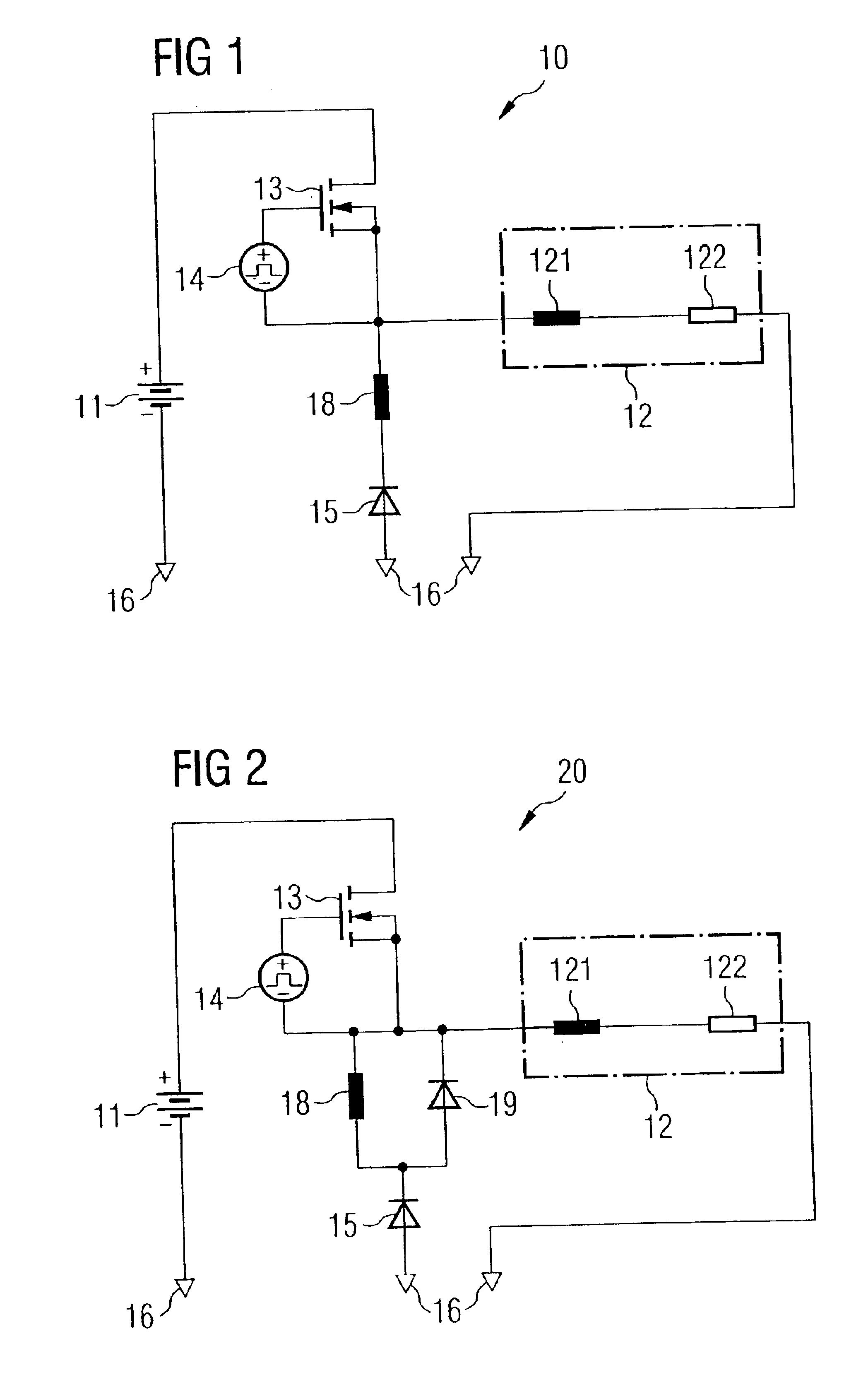Circuit arrangement for high-speed switching of inductive loads
a high-speed switching and inductive load technology, applied in the circuit arrangement of the board/switchyard, pulse generator, pulse technique, etc., can solve the problems of correspondingly high coil current and insufficient ohmic resistance of the coil to effectively limit the coil curren
- Summary
- Abstract
- Description
- Claims
- Application Information
AI Technical Summary
Benefits of technology
Problems solved by technology
Method used
Image
Examples
Embodiment Construction
[0034]FIG. 5 represents a prior-art basic circuit 50 for high-speed switching of an inductive load 12. FIG. 7 is a schematic representation of the signals occurring in the circuit. To the inductive load 12, which is shown as a combination of the actual inductance 121 and the ohmic resistance 122 of the coil winding of a magnetic valve, in the turned-on state, an exciter voltage is supposed to be applied by a power supply source 11. To ensure the fastest possible switching operation at a specific inductance 121, a comparatively high exciter voltage is selected. In this present context, this means an exciter voltage which is at least high enough so that the coil resistance 122 is not sufficient to effectively limit the current ISP (FIG. 7c) through the coil 12 to a desired value. It is therefore necessary to otherwise limit the coil current ISP during the activation phase of the magnetic valve. For that purpose, the switching transistor 13, which closes the power circuit comprising th...
PUM
| Property | Measurement | Unit |
|---|---|---|
| time | aaaaa | aaaaa |
| time | aaaaa | aaaaa |
| voltage | aaaaa | aaaaa |
Abstract
Description
Claims
Application Information
 Login to View More
Login to View More - R&D
- Intellectual Property
- Life Sciences
- Materials
- Tech Scout
- Unparalleled Data Quality
- Higher Quality Content
- 60% Fewer Hallucinations
Browse by: Latest US Patents, China's latest patents, Technical Efficacy Thesaurus, Application Domain, Technology Topic, Popular Technical Reports.
© 2025 PatSnap. All rights reserved.Legal|Privacy policy|Modern Slavery Act Transparency Statement|Sitemap|About US| Contact US: help@patsnap.com



